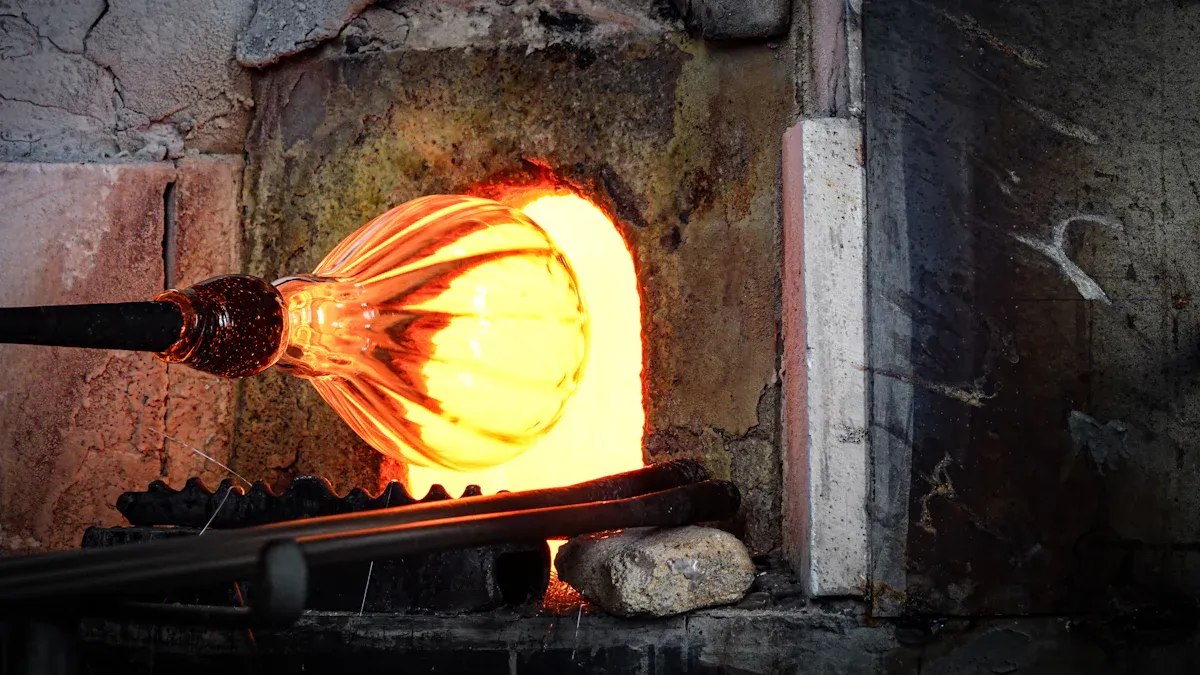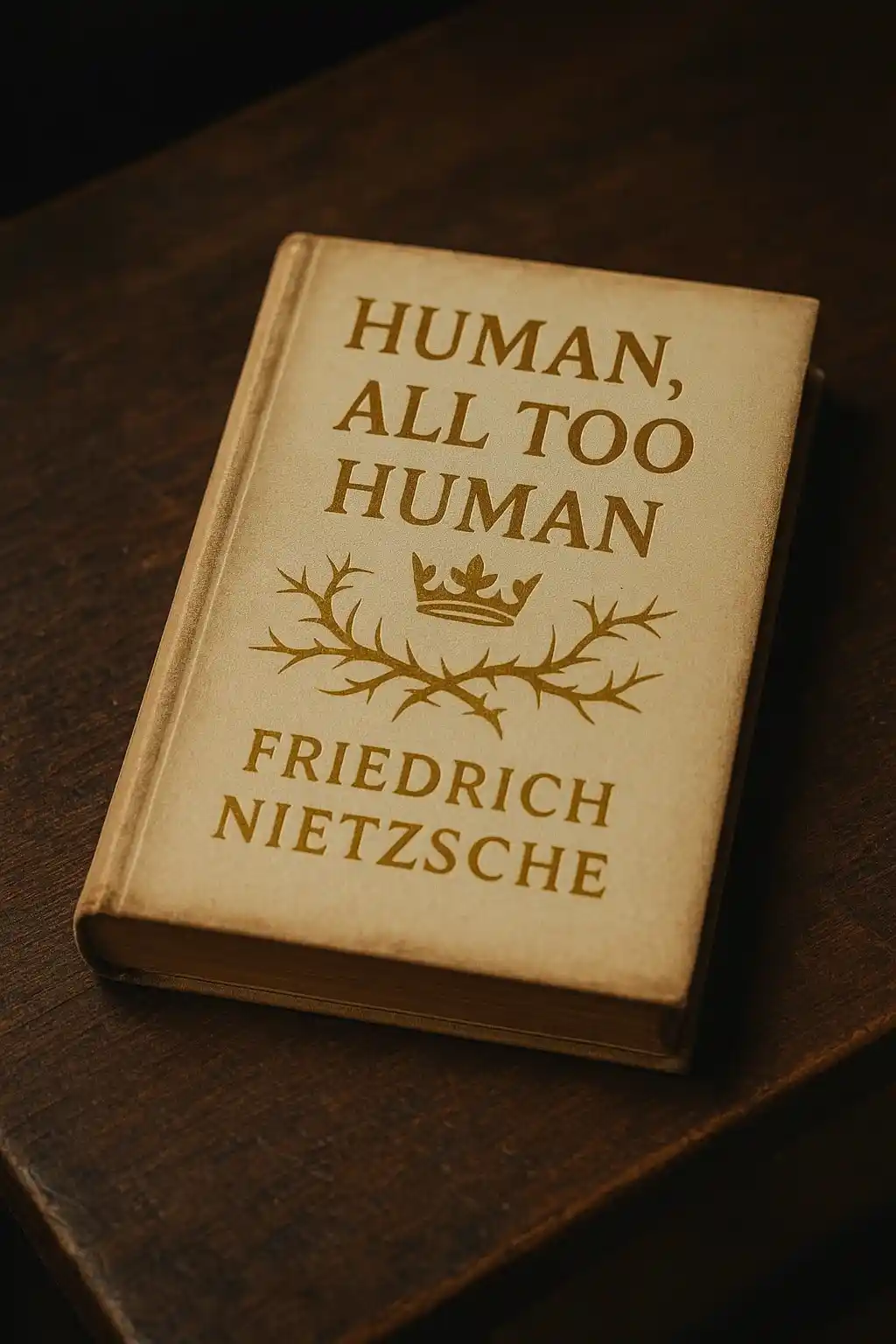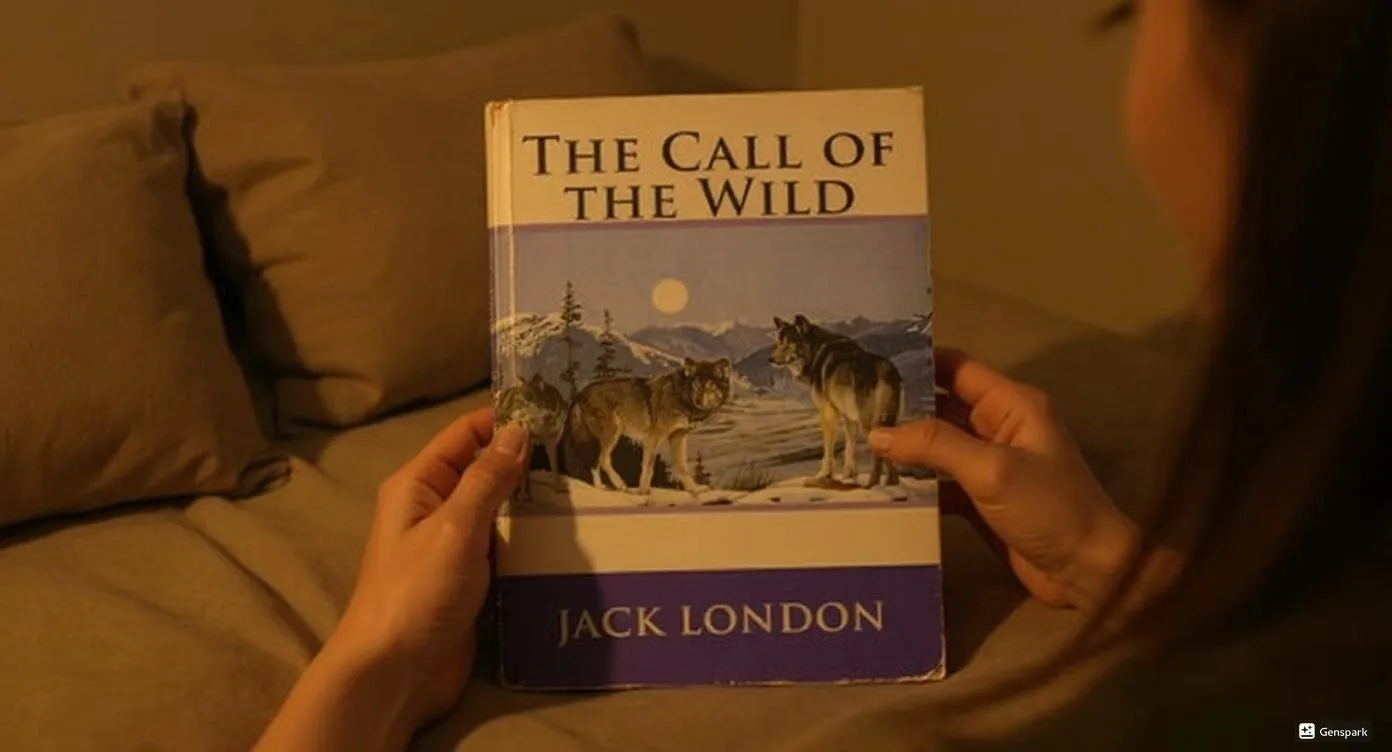I will be honest—I read The Glassmaker by Tracy Chevalier all at once. My eyes hurt and my heart beat fast. The time-skipping magic and Venice’s pretty canals drew me in. If you like slow family stories with a bit of the unreal, this book is perfect for you.
Best for: Fans of historical fiction, magical realism, and anyone who wants to feel transported.
Key Takeaways
The Glassmaker is a magical story about the Rosso family. They make glass in Venice. The story mixes real history with some fantasy.
Orsola Rosso tries to break gender rules. She loves making glass. The story shows strong family bonds. It also shows tradition and survival over many years.
Tracy Chevalier uses clear words and a detailed style. She makes Venice and glassmaking feel real. This book is great for people who like historical fiction.
Synopsis
Story Overview
I got swept up in the Rosso family’s story right from the first page. The Glassmaker by Tracy Chevalier starts in 1486, on the island of Murano, Venice. Orsola Rosso is a young woman in a family of glassmakers. She dreams of working with glass, even though the rules say only men can do it.
The story doesn’t just stick to one time. It jumps across centuries, and the same characters—especially Orsola—move through history almost unchanged. They age slowly, which feels magical but also a little haunting.
Every time the story skips forward, Venice changes. I saw the city face the plague, wars, and even a modern pandemic. The Rosso family keeps making glass, no matter what happens. Orsola’s stubbornness and love for her craft tie everything together.
I loved how the book made each era feel real. The details about glassmaking and Venice’s canals pulled me in. I could almost hear the furnaces and see the colored glass.
Note: Reviewers praise the way Chevalier brings history to life. The time-skipping device lets us see Venice and the Rosso family survive through centuries. The historical events—like the plague and world wars—feel real and urgent.
Main Themes
This book isn’t just about pretty glass or old buildings. It digs into big ideas that stuck with me long after I finished.
Family and Legacy: The Rosso family’s craft passes from one generation to the next. I felt the weight of tradition and the struggle to keep it alive. Orsola’s journey shows how family shapes who we become.
Gender and Society: Orsola fights for her place in a world that tells her “no.” The rules about who can make glass feel unfair, and I cheered every time she pushed back. The book shows how women have always found ways to break barriers, even when the world tries to stop them.
Change and Survival: The slow aging of the characters made me think about what it means to live through so much history. The Rosso family faces plagues, wars, and loss, but they keep going. The story draws clear lines between the old plagues and the recent pandemic, making it feel timely and real.
Art and Craft: The glassmaking scenes are some of my favorites. Chevalier’s research shines here. I learned about the beauty and danger of working with glass. The craft becomes a symbol of hope and survival.
To be fair, some reviewers found the time jumps a bit confusing at first. But I have to give props to Chevalier for making each era feel fresh and alive. The emotional depth and historical detail made me care about the Rosso family, especially Orsola.
The Glassmaker by Tracy Chevalier left me thinking about how families survive, how art endures, and how history repeats itself. If you like stories that mix real history with a touch of magic, this one will stick with you.
Writing Style
Narrative Voice
Chevalier’s writing style in The Glassmaker grabbed me right away. I felt like I was sitting beside Orsola, watching her shape glass and fight for her place in the family. The voice feels both intimate and sweeping. I noticed how the story zooms in on Orsola’s thoughts and struggles, but also pulls back to show Venice changing over hundreds of years.
The book’s feminist perspective stands out. Orsola’s journey, inspired by a real woman glassmaker, gives the story a strong, personal tone.
Chevalier’s focus on family bonds and the ups and downs of the Rosso clan makes the story feel close and real.
The descriptions of glassmaking—every hiss, every color—made me feel like I was right there in the workshop.
The narrative voice blends historical detail with personal experience, so I never felt lost in the past.
I have to give props to Chevalier for making the same characters live through centuries. This odd choice actually works. It makes Venice and Murano feel timeless, almost magical.
Pacing and Structure
I’ll be honest, the pacing sometimes threw me off. The story jumps across centuries, and sometimes I had to pause and figure out where (and when) I was. The structure is bold—Chevalier doesn’t stick to a straight timeline.
The book moves in leaps, not steps. Sometimes decades pass in a few pages.
I liked how each era felt fresh, but the time jumps could feel abrupt.
The slow aging of the characters adds a dreamy, haunting quality.
Tip: If you like stories that play with time and structure, you’ll enjoy this. If you want a straight line from start to finish, you might get a little dizzy.
Overall, the writing style is immersive and innovative, but it asks you to pay attention. I found myself flipping back a few times, but I never wanted to stop reading.
Characters
Orsola Rosso
Orsola Rosso grabbed my attention right away. She is a character you remember long after reading. I felt upset for her when people said she could not make glass. Her stubborn side made me cheer for her, even when she took big risks.
Orsola’s slow aging made her story feel strange and magical. I liked how she stayed excited about glass, no matter what year it was.
Bold, determined, and flawed—Orsola did not seem perfect. She made mistakes, held onto anger, and sometimes pushed her family away.
Her love for her craft felt true. I could almost feel the furnace’s heat and see the bright glass she made.
Orsola’s journey through time showed how she changed and stayed the same. This made her seem both timeless and very real.
I have to give props to Chevalier for making Orsola’s fight with gender roles feel so real. I cheered every time she broke a rule or found a new way to keep going.
Supporting Cast
The supporting cast in The Glassmaker surprised me with how real they felt. Orsola’s mother, Laura, and her brother, Marco, stood out the most. Their relationships with Orsola were messy and honest.
Marco was jealous and did not like Orsola’s dreams. Family dinners were tense because he never hid his doubts. This made things dramatic.
Laura, Orsola’s mother, quietly broke rules. She helped Orsola in small but strong ways, showing that women in the Rosso family had their own kind of power.
The Rosso family’s loyalty and fights made every scene exciting. Each generation got the family business, but also the secrets and problems.
Chevalier’s time-skipping style let me see these characters grow and change. Sometimes, I wanted more time with each one, but their stories always came back to the family’s heart: glass, tradition, and survival. The supporting cast did not just fill space—they made the Rosso legacy feel real and alive.
Setting

Murano and Venice
When I read this book, I felt like I was on Murano. Chevalier describes the canals and glass workshops in great detail. The city’s daily life feels real and alive. I could almost feel the heat from the furnaces. I imagined hearing water splash against the stone. The setting is so strong, I wanted to see Venice pictures. I checked if they looked like what I pictured in my mind.
Here’s a quick look at how the book’s setting matches real history:
Aspect | Evidence Supporting The Glassmaker’s Description |
|---|---|
Glassmakers have worked on Murano since the 13th century; originally worked in Venice but moved due to fire risk. | |
Geographical proximity | Murano is an island just north of Venice; travel by gondola takes about one hour to Venice, two hours to Rialto. |
Historical figures and cultural references | The gondolier character Domenego is inspired by Carpaccio’s 1494 painting “Miracle of the Relics of the Holy Cross at Rialto” displayed in Venice’s Accademia. |
Glassmaking craft details | Description of glassmaking process, including molten glass shaping, and Murano’s reputation for high-quality artistic glassware. |
Social and cultural dynamics | Few people left Murano in the 15th-17th centuries; strong relationship between Muranese and their island. |
Murano feels small but also very important in the story. The canals and bridges seem real. The families are close and know each other well. Venice feels like a character too. Sometimes it is beautiful, sometimes old and falling apart, but always special.
Historical Atmosphere
Chevalier’s Venice is more than pretty buildings and boats. She fills the city with real history and daily life. She talks about narrow streets and the famous spiral staircase at Scala Contarini del Bovolo. She also mentions busy merchant buildings. The Doge’s Palace and the Bridge of Sighs are in the story too. These places made me want to visit Venice.
Chevalier learned glassmaking from a real Murano artisan, so every workshop scene feels honest.
The story includes small artisan shops, crowded markets, and the constant sound of water.
Museums like Ca’ Rezzonico and Palazzo Mocenigo show up in the background, adding to the sense of time and place.
I could picture the city’s moods. There are foggy mornings, busy festivals, and quiet nights. The book’s historical feel made me care about the Rosso family. Venice felt magical and real at the same time. That is hard to do.
Themes
Family and Tradition
Family and tradition shape every page of The Glassmaker. I felt the Rosso family’s glassmaking legacy in every scene. The story follows the Rossos from Renaissance Italy to today, and I saw how each generation clings to their craft.
Orsola and the women in her family keep the glassmaking tradition alive, even when life gets tough. I loved how the book shows family bonds that stretch across centuries.
The Farmington Libraries listing points out how the Rosso women hold the family together, passing down skills and secrets.
The Lotus Writing Therapy blog talks about Orsola secretly learning glassmaking to help her family. That part made me root for her even more.
I noticed the quote, “A woman tending her own furnace: this was something new.” It shows how women like Maria Barovier and Orsola break old rules but still honor family tradition.
Sometimes, the family fights over what matters more—art or business. Marco smashing a goblet really stuck with me. It showed how hard it is to keep a tradition going when everyone wants something different. The story made me think about my own family and what we pass down.
Gender and Society
Gender and society play a huge role in Orsola’s journey. I saw her push against rules that say only men can make glass. She learns in secret, and every time she steps up, I wanted to cheer. The book shows how women find ways to keep their dreams alive, even when the world says “no.”
Orsola’s mentor, Maria Barovier, explains that women can make beads because they’re “inconsequential.” That line made me mad, but it also showed how women work around unfair rules.
The Rosso women support each other, even when men in the family doubt them.
I liked how the story connects old rules to modern struggles. It made me think about how some things change and some things stay the same.
This theme felt real and honest. I have to give props to Chevalier for making me care so much about Orsola’s fight. The book doesn’t sugarcoat the struggle, but it shows hope, too.
The Glassmaker by Tracy Chevalier: Analysis
Magical Realism
The magical realism in The Glassmaker surprised me. Orsola and her family hardly get older, even as years go by. I sometimes had to check if I missed something. The story lets us see Venice change, but the people stay the same. This was a little creepy but also nice.
The book mixes real history with a bit of magic. Orsola lives through plagues, wars, and a modern pandemic, all in one life.
Critics say slow aging is a common magical realism idea. It helps connect old pain to one person, which made some parts feel stronger to me.
Sometimes, I wanted the characters to grow more. They seemed stuck, almost like statues, and that made me a bit annoyed. Still, the magic made Murano’s glassmaking seem like it could last forever.
If you enjoy stories that change time and reality, you might like this. I had to believe in the magic, but I liked seeing history through Orsola’s eyes.
Art and Craft
The art and craft in this story are as bright as Murano glass. I could almost smell smoke and hear glass hiss. Chevalier did a lot of research, and it shows.
Orsola’s story comes from real women like Marietta Barovier, who broke rules and made beads.
The book tells how women used lampworking at home, since they could not work in big furnaces.
I learned about beadmaking, secret ways to make glass, and how glassmakers kept their skills safe.
Here’s a table that shows what I learned about Murano glassmaking:
What I Noticed | What History Says |
|---|---|
Women made beads at home | Lampworking let women craft beads in secret |
Glassmakers had special rights | They wore swords and had legal immunity |
Beads were used for trade | Even Columbus took them on his voyages |
The Glassmaker by Tracy Chevalier helped me see how much skill and danger goes into making glass. I think Chevalier did a great job making the craft feel real.
Strengths
Storytelling
I’ll admit it—I lost track of time reading this book. I started after dinner and suddenly the sun was coming up. The storytelling in The Glassmaker pulled me in right away. Chevalier knows how to make history feel close. I felt like I was living in Murano, watching Orsola’s life change with each new century.
The story moves through war, plague, love, and loss. Each part felt real and important.
Orsola’s journey as a strong, adaptable woman kept me rooting for her.
The pacing jumps across centuries, but I never felt bored. Sometimes I had to pause and remember what year it was, but I liked the challenge.
Chevalier’s style reminds me why I love character-driven historical fiction. The emotions hit hard, and I cared about the Rosso family.
I have to give props to Chevalier for making each era feel alive. The book’s emotional depth left me gasping more than once.
Immersive World
Venice and Murano felt so real, I could almost smell the smoke from the glass furnaces. Chevalier’s details made me want to book a flight and see the canals for myself.
The descriptions of glassmaking are jaw-dropping. I learned so much about the craft without feeling like I was in a classroom.
The city changes with time, but the heart of Murano stays the same.
I loved the way Chevalier showed daily life—festivals, markets, quiet nights by the water.
If you want a book that makes you forget your own world, this one does the trick. I couldn’t put it down, even when my eyes started to ache.
Weaknesses
Pacing Issues
I have to say, the pacing in The Glassmaker was tricky for me. Sometimes I had to look back at earlier pages to see what year it was. The story moves from one century to another, and that can get confusing.
Some chapters talk a lot about glassmaking. I liked those parts, but not everyone will. If you do not care about the craft, those sections might feel slow.
Non-linear timeline: The story jumps between generations. I had to really focus to keep track.
Detailed descriptions: The glassmaking scenes look nice, but they slow things down if you want more action.
Uneven pacing: Some parts of history go by fast, while others seem to take forever.
Reviewers say the technical details and time jumps can make the book feel slow. No one gave exact numbers, but I noticed my mind wandering sometimes. I wanted the story to move more smoothly.
Experimental Elements
Chevalier tries something new with her “time alla Veneziana” idea. The characters do not age quickly, and time feels strange and dreamy. I liked the idea, but it did not always work for me.
Some readers said the time changes made them lose focus. They stopped paying close attention and started skipping parts.
A few people wanted the story to stay in the old times instead of jumping to today.
The experimental style felt “shaky” to some critics, so the story was less easy to get lost in.
I think it is good to try new things, but this experiment did not always work. Sometimes I wanted only magic or only a regular historical story, not both together.
Comparison
Chevalier’s Other Novels
I’ve read a lot of Tracy Chevalier’s books, and I always expect a deep historical story. Girl With A Pearl Earring and The Lady and the Unicorn both pulled me into one time period. I felt like I lived in those worlds for a while. The Glassmaker surprised me because it jumps through centuries with the same characters. That’s not what Chevalier usually does.
In her older books, the characters grow and change with their time. I saw them face problems and come out different.
In The Glassmaker, Orsola and her family barely age. They watch Venice change, but they stay almost the same. Sometimes, this made me wish for more character growth.
Chevalier’s usual style feels focused and steady. Here, she takes a risk with a story that feels more experimental and dreamy.
To be fair, I have to give props to Chevalier for trying something bold. The time-skipping made me feel both lost and amazed.
Similar Historical Fiction
If you love stories about craft and family, you might like books by Kate Morton or Sarah Dunant. Their novels stick to one time and let you watch characters grow up and change. The Glassmaker stands out because it mixes magical realism with real history.
Kate Morton’s books, like The Clockmaker’s Daughter, focus on secrets and family over generations, but each character lives a normal life span.
Sarah Dunant’s The Birth of Venus gives you a strong sense of place and time, but doesn’t play with time the way Chevalier does here.
If you want a story that feels both old and new, with a touch of magic, The Glassmaker is a unique pick.
I’ll be honest, I couldn’t put it down, but I sometimes missed the tighter focus of Chevalier’s earlier work. If you want something different from your usual historical fiction, this one might surprise you.
Who Should Read The Glassmaker by Tracy Chevalier
Ideal Readers
I always ask myself, “Who would love this book as much as I did?” If you enjoy stories that mix real history with a touch of magic, you’ll probably get hooked. Here’s who I think will get the most out of The Glassmaker by Tracy Chevalier:
Fans of historical fiction who want something a little different
Readers who love strong, determined women at the center of a story
Anyone who likes family sagas that stretch across generations
People who want to learn about glassmaking without reading a textbook
Those who appreciate a Venice setting that feels both real and a bit magical
Tip: If you’ve ever wished you could step into another time and place, this book will scratch that itch.
Best Occasions
I read this book late at night, curled up with a blanket and a cup of tea. That felt perfect. Here are some other great times to pick up The Glassmaker by Tracy Chevalier:
Rainy days when you want to escape somewhere beautiful
Book club nights—there’s so much to talk about
When you need a break from fast-paced thrillers and want something slower and richer
If you’re traveling to Italy (or just dreaming about it)
When you want a story that lingers in your mind after you finish
I’ll be honest, this isn’t a pulse-pounding read, but it left me thinking about family, art, and how we survive change. If that sounds good, you’ll probably enjoy it as much as I did.
I’d rate The Glassmaker by Tracy Chevalier a solid 7/10. The story blends history, family, and a bit of magic. I loved the vivid Venice setting and Orsola’s journey. Some pacing felt slow, but the characters and glassmaking details shine. Who else got swept up in this story? Share your thoughts below!
Critics call it “spellbinding” and praise its emotional depth. If you love historical fiction with heart, this one’s for you.
Sip The Unknown—Discover Stories You Never Knew You’d Love!
Dionysus Reviews Has A Book For Every Mood
Biography & Memoir
Fiction
Mystery & Detective
Nonfiction
Philosophy
Psychology
Romance
Science Fiction & Fantasy
Teens & Young Adult
Thriller & Suspense
Frequently Asked Questions
Does The Glassmaker have a happy ending?
I won’t spoil it, but the ending felt hopeful. I closed the book with a smile, even if some parts left me thinking about Orsola’s choices.
Is this book good for younger readers?
I’d say ages 13 and up. Some themes feel heavy, but nothing too scary. If you like history and family stories, you’ll enjoy it.
Do I need to know about glassmaking before reading?
Nope! I knew nothing about glass before. Chevalier explains everything in a way that made me curious, not confused. You’ll learn as you go.
Tip: Don’t worry if you get lost in the glassmaking details. Just enjoy the story and let the craft pull you in.









